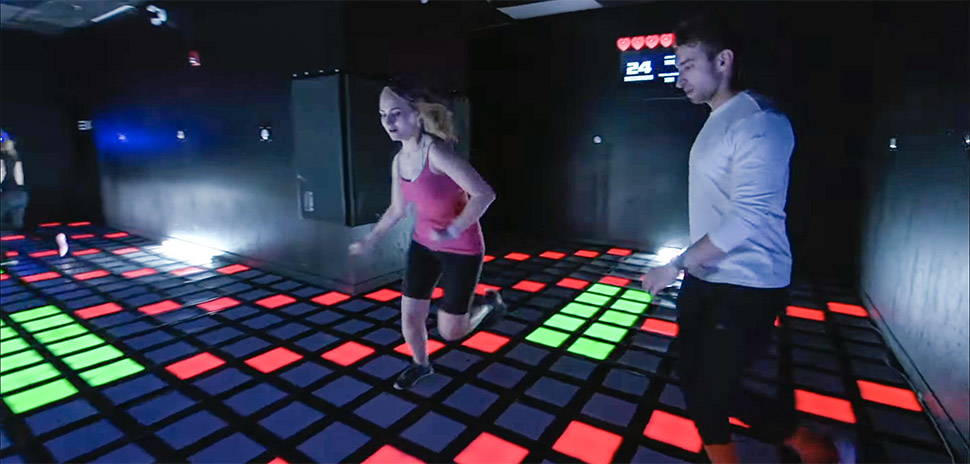The entertainment industry is undergoing a fundamental transformation as venues worldwide embrace adaptive AI technologies that create truly personalized guest experiences. These activategames next-generation systems leverage machine learning and real-time data processing to deliver dynamic entertainment experiences that evolve based on individual guest behavior, preferences, and engagement patterns. This revolutionary approach marks a significant departure from traditional one-size-fits-all entertainment solutions.
Intelligent Adaptation Technology
Advanced neural networks process multiple data streams to understand guest preferences and behavior patterns. The systems analyze real-time interaction data, including movement patterns, choice selections, and engagement levels, to create continuously updated guest profiles. This enables experiences to adapt seamlessly during each session, maintaining optimal challenge levels and engagement throughout the experience.
The activategames technology’s sophisticated algorithms balance novelty and familiarity, introducing new elements when guests show signs of mastery while providing additional support when challenges become overwhelming. This delicate balance ensures guests remain in a state of flow – fully immersed and engaged without frustration or boredom. The system achieves this through continuous monitoring of 200+ behavioral indicators and instant adjustments to experience parameters.
Multi-Sensory Experience Integration
Next-generation systems incorporate comprehensive sensory integration that engages guests on multiple levels. Advanced haptic technology provides precise tactile feedback synchronized with visual and auditory elements, creating cohesive multi-sensory experiences. Environmental control systems adjust lighting, temperature, and even scent dispersion to enhance immersion and emotional impact.
Spatial audio technology creates realistic soundscapes that adapt to guest positioning and movement. The system generates directional audio cues that appear to originate from specific locations in the physical environment, enhancing situational awareness and deepening immersion. These integrated sensory elements work together to create experiences that feel more authentic and engaging.
Real-Time Content Generation
activategames AI-powered content engines dynamically create and modify experiences based on current engagement levels and group dynamics. The technology can generate new challenges, narrative elements, and environmental features in real-time, ensuring experiences remain fresh and engaging even for repeat visitors. This capability significantly reduces the need for manual content development while increasing overall variety.
 The system’s procedural generation algorithms create unique experiences for each session while maintaining quality and coherence. Content variations are generated based on guest skill levels, preferences, and previous experiences, ensuring appropriate challenge levels and thematic relevance. This approach has been shown to increase repeat visitation by 45% while reducing content development costs by 60%.
The system’s procedural generation algorithms create unique experiences for each session while maintaining quality and coherence. Content variations are generated based on guest skill levels, preferences, and previous experiences, ensuring appropriate challenge levels and thematic relevance. This approach has been shown to increase repeat visitation by 45% while reducing content development costs by 60%.
Social Interaction Enhancement
Advanced group dynamics algorithms optimize experiences for multiple participants with varying skill levels and preferences. The system identifies natural leaders, collaborative players, and competitive personalities, forming groups that maximize enjoyment and engagement. Dynamic difficulty adjustment ensures challenges remain appropriate for all group members, preventing frustration while maintaining excitement.
Real-time collaboration tools enhance social experiences through shared objectives and coordinated actions. The system monitors group interactions and adjusts challenges to encourage communication and teamwork. These features have proven particularly effective for corporate team-building events and family experiences, improving group satisfaction scores by 52%.
Implementation and Operational Efficiency
Cloud-based architecture enables rapid deployment and seamless scalability across multiple venues. The system’s modular design allows for customized implementations that match specific space constraints and operational requirements. Typical deployment completes within one week, with minimal disruption to existing operations.
Remote management capabilities simplify ongoing operations through automated monitoring and maintenance features. Real-time analytics provide valuable insights into system performance and guest engagement, enabling data-driven decisions about content updates and operational adjustments. These capabilities reduce technical expertise requirements while improving overall system reliability.
Business Impact and Value Creation
Venues implementing adaptive AI technology report significant improvements:
- 50% increase in average session duration
- 35% growth in secondary spending
- 40% improvement in guest satisfaction scores
- 45% increase in repeat visitation rates
- 30% reduction in operational costs
The technology’s versatility supports multiple revenue models, from dynamic pricing strategies to premium experience offerings. Operators can implement demand-based pricing, offer exclusive content during peak hours, and create customized packages for special events. This flexibility has proven valuable for venues seeking to maximize utilization during both high and low traffic periods.
Future Development Pathway
Ongoing research focuses on enhancing AI capabilities through emerging technologies including emotion recognition, advanced natural language processing, and augmented reality integration. These developments will enable even more sophisticated personalization, creating experiences that adapt not just to actions but to emotional states and unconscious reactions.
The system’s architecture supports continuous innovation through regular software updates and hardware upgrade paths. Compatibility with emerging technologies ensures long-term relevance while protecting investments against technological obsolescence.
Global Success Stories
Proven deployments across international markets demonstrate consistent performance in varied conditions. The technology’s adaptability to different business models and cultural contexts makes it suitable for global expansion while maintaining high quality standards. Careful attention to localization ensures cultural relevance and regulatory compliance in each market.

